Backpacking can be great fun or a death march. It is up to you to control the ratio of fun to suffering.
I have crisscrossed the globe since I was a child and have been in plenty of situations I would rather others learned about through observation rather than experience, patching bullet wounds in people and vehicles, exploring ice caves in the Eiger in the Swiss Alps without any socks (don’t ask), being robbed by a gang of Gypsies in Portugal and battling prehistoric mosquitoes in Brazil, to name a few.
If you are new to backpacking, please take a moment to review a few too common mistakes in order to maximize the recreational aspects of backpacking and dial down the Suck-O-Meter.
We started we only seven mistakes, that you might know already if you read our previous article on backpacking. But there’s more to it, so here is what you need to know!
1. Thinking you can put everything you need in your backpack.
- First off, the most important things one can bring into the outdoors are outdoor survival skills, judgment, vision and adaptability. If an individual is gravely deficient in one or more of these areas, there is nothing they can put in a pack that will save their lives. If this is you or someone you know, be sure you or they are accompanied by someone you trust who can teach and guide.
- Second, core survival/self-recovery equipment should be carried in your pockets, not your pack. That way, when any of untold numbers of unpredictable scenarios where you can be separated from your pack occur, (you are ejected from a vehicle, pinned in wreckage, set your pack down to rest, lose your pack in an avalanche, you are compelled to ditch your pack in order to swim, etc.) you will not lose your core survival equipment along with your pack.
- Third, don’t be too much of a gear critic. The other day, I heard someone trashing a great pack because a strap broke on theirs. By definition, survival is the most DIY (Do It Yourself) of disciplines. All equipment is a compromise between light weight and durability. If you use your gear, you will break it and must be able to repair it in the field. You should be able and equipped to repair gear or to improvise.
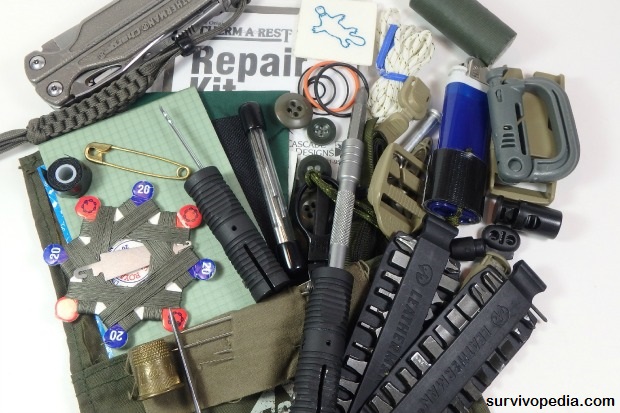
This versatile bag can be your next best backpack!
2. Trying to fill your backpack.
There is a tendency to see a backpack as a container to be filled. “You have space, so you can fit one more piece of gear in there.” Make a list of everything you need and nothing you don’t. Pack that.
If you don’t fill your pack, tighten down the compression straps or move your gear to a smaller pack, but it’s better to have a little extra room in case someone gets injured and you need to pack out some of their equipment on top of your own.
3. Lack of research.
You need information to plan effectively.
Some examples would be: distance you will hike, change in elevation, terrain, climate, possible extreme weather events, altitude, creepy crawlies and other environmental dangers, which water sources are year-round or seasonal and their condition, road condition, distance from services, permits or licenses needed, cell coverage area, local radio frequencies and repeaters.
You should also check if there is a waiting list or mandatory check-in with a ranger station, local laws, local customs, if you will be hiking in hunting season or other events that mean more pressure on the area, ecological concerns specific to the area and endangered species, presence of historical or archaeological sites and so on.
4. Don’t use a checklist.
This is a great way to forget important equipment and the tendency is exacerbated by stress so be sure to include checklists, contents lists and instructions with all layers and modules of survival and emergency gear. Someone else may be using it to save you and they won’t know what you packed.
5. Don’t empty your pack before you pack it.
Having a pack ready to grab on your way out the door is a great thing … for emergencies. If you have the time, use it by emptying out your pack, doing a gear inventory and repacking it. It is decidedly less effective to haul some heavy piece of gear you don’t need along on a punishing trip because you forgot it was hiding in your pack.
6. Don’t pack the items you will need first where you can easily access them.
If you are going to stop along your trek to filter water, you don’t want to have dig the gear you need to do it out of the bottom of your pack. Thinking modular terms will save you time and money and help you to not forget important gear.
7. Don’t bring a notebook and pen.
Keep an adventure journal or pertinent information such as position, date, time, temperature, humidity, weather, altitude, injuries, incidents and so forth on your trips. Note what works and what doesn’t and what you wished you had brought with you. Eliminate non-emergency-related gear that you don’t use regularly.
8. Packing heavy items low in your pack.
Pack heavy items like water high in your pack and close to your back.
9. Adjust your pack so that weight rests on the shoulders.
This will tire you out and make you sore. A backpack should have a well-padded waist belt and a sternum strap. If yours doesn’t, add them or get a new pack. Adjust your pack so most of the weight rests on your hips.
This perfect waterproofed bag is light, tough and durable!
10. Forget to trim your toenails.
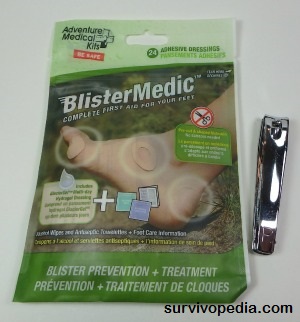
11. Don’t layer
Or don’t use layering properly. Pack and wear clothing so you can add and remove loose-fitting layers of clean, dry clothing as needed to control your temperature and provide ventilation.
It is better to be a little bit colder than is comfortable as you backpack than to let sweat and moisture accumulate inside your clothing. Your clothing is your first line of protection against exposure.
12. Dress for daytime temperature.
Instead of nighttime temperatures on day hikes. Any time you head out, you may end up spending the night due to unforeseen circumstances.
13. Don’t know how to use a map and compass or don’t bother to bring them.
Even if you know every inch of the terrain your are in, you may still end up needing a map to convince a lost group of their true position or to call in coordinates for a rescue.
14. Pack a filter that uses micro-tubule tech on a trip where it may freeze during the night.
I have seen rashes of five star reviews extolling the virtues of new water filters using hollow fiber technology claiming to filter 100,000 gallons of water. They must not camp in cold weather. If you allow even a single microscopic ice crystal forms in this type of filter, the only way you will know is when you double over vomiting with a terrible case of diarrhea.
“No problem, just keep it in your jacket and your sleeping bag.” says the guy who can’t manage to wash his hands before meals on the trail. But he will remember to move his wet water filter inside his jacket, not gripe when it dribbles and gets his base layer wet and then transfer it to his sleeping bag after he forecasts that the temperature will dip below freezing … sure he will.
15. Eliminate essential safety gear because you haven’t used it on the last 10 trips.
The thing about emergency gear like trauma kits and signal gear is that unless you are incompetent, you won’t need it often, but when you do, you will REALLY need it. While you are at it, don’t be the ultralight guy who brags about how little weight he carried and then turns around and borrows half a dozen pieces of gear from his buddies and eats their food either.
16. Wear brand new boots.
Break in new boots before you take them on the trail to avoid blisters.
17. Fail to plan as a group.
Boy could a lot of survivalists stand to learn from this. A well-run scout troop is organized into patrols. Each scout carries his personal gear and then his share of the patrol gear. They understand that if each guy brings every conceivable piece of gear that he could possibly need, you end up carrying a lot of unnecessary weight.
A group of 6 people doesn’t need 6 axes, 6 files, six sharpening pucks, 6 rain flies, 6 frying pans and so on. If you are traveling as a family, plan as a family. It is also nice to have access to a variety of tools instead of everyone carrying exactly the same equipment.
18. Poor planning exacerbates poor hygiene.
Maintaining proper hygiene takes planning and extra effort in a survival setting or while backpacking. Folks who have lived their whole lives with hot running water tend to back-burner hygiene if it means a cold bath in the creek, but you will be more comfortable and suffer less if leave your comfort zone and
- Don’t pack gear to wash your hands before eating. Much is made of treating water to kill parasites like giardia and cryptosporidium, but water is only one way to become infected. You are just as likely to be infected with giardia by failing to wash your hands before eating as not treating water, yet even graduates of some of the best survival schools on the planet either don’t understand this or regularly fail to put it into practice.
- Plan to eat meals inside your tents and cook near where you bed down instead of in a separate spot. For every person dragged out of a tent by a bear, there are 100’s who have had holes chewed in packs and tents by rodents, raccoons or skunks looking for a meal. With a more sensitive sniffer than a bloodhound, if you eat inside your tent even once, you should not use that tent in bear country ever again. You don’t want to become a soft taco for a bear, but you don’t have to be camping in bear country for eating inside your tent to be a bad idea, and it does not take a bear to chew holes in your gear in search of food.
- Don’t bring gear to wash up properly after meals. I once left a camp full of scouts on the beach of lake in the Sonoran Desert to help drain a boat and change its plug in the middle of the night since the boat was taking on water. Upon our return to camp, I swept the shore with the spotlight to find a troop of skunks in the camp with one standing atop a sleeping scout lapping the remnants of the young man’s supper right off his face.
19. Make your pack weight conform to some arbitrary number that likely has nothing to do with you and your abilities.
Despite what “professional” backpackers (I never imagined I’d see the day where backpacking would be a profession) may write, there is no magic number for how much weight to carry.
Learn your limitations, know them and abide by them. You may be able to safely carry 2-4x recommended weights based on your bodyweight, sex and physical condition or you might need to carry a fraction of it.
20. Don’t bring a hiking stick or trekking poles.
They can prevent ankle sprains, dunks in cold rivers and disastrous spills in addition to acting as shelter poles, fending off snakes, preventing you from needing knee surgery one day, reaching someone who has fallen through ice and saving you pain two dozen other ways.
21. Don’t stop when you start to feel a hot spot.
Giant blisters start out as hot spots. If you feel a hot spot, don’t be shy about it. Stop and take care of it before it turns into something worse.
22. Head out on an expedition with untested companions.
If your friends are going to give you grief over stopping to take care of your feet, educate them or get some new friends before you need to count on them in a real emergency. You shouldn’t head out on the trail or a hunt with people you can’t count on. Try some afternoon outings with them until you feel you could count on them on a serious expedition.
23. Bet your life on battery powered equipment.
There is a false perception that the moment you press the SOS button on your PLB (Personal Locator Beacon) you are saved, a Blackhawk will immediately swoop down and pluck you from the jaws of death in the middle of a blizzard. In reality, electronics break, batteries die, everything that uses radio waves to communicate is capable of experiencing interference and human error can cause Murphy to rear his head at any of a number of points between you pressing that button and when you are safely home.
Do bring a PLB, cell phone, radio or other communications equipment, but don’t bet your life on it. You may be out longer than planned, so be sure to bring extra batteries.
Consider the following:
- Who would respond to your call for rescue? Know who would get the call and what their capabilities are. This will help you to plan realistically.
- How will they get there and when? Not all SAR teams have access to air assets and even if they are available, the weather has to be good enough for them to be able to fly, and they have to have the visibility to search for you. Many SAR teams are county volunteers. It may take 8-12 hours for them to muster and they will probably need daylight. Bad weather may delay a search so be prepared to survive another day or two and signal once they are in the general area
- Who will foot the bill for the rescue?
This bag has the very best closure seal on the market which allows for heavy duty use.
This article has been written by Cache Valley Prepper for Survivopedia.
0 total views, 0 views today
from Survivopedia
Don't forget to visit the store and pick up some gear at The COR Outfitters. How prepared are you for emergencies?
#SurvivalFirestarter #SurvivalBugOutBackpack #PrepperSurvivalPack #SHTFGear #SHTFBag

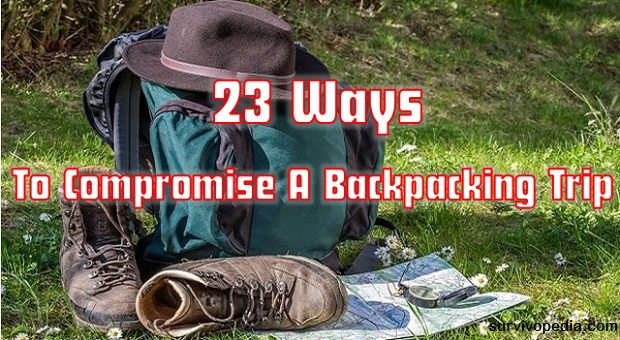
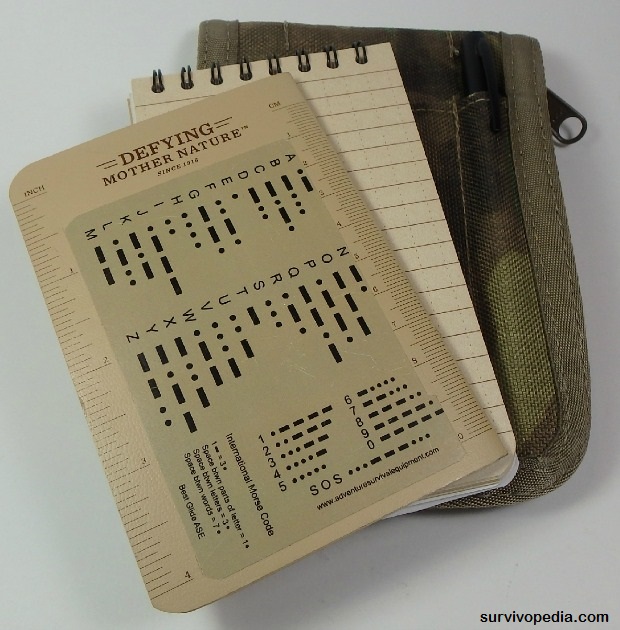
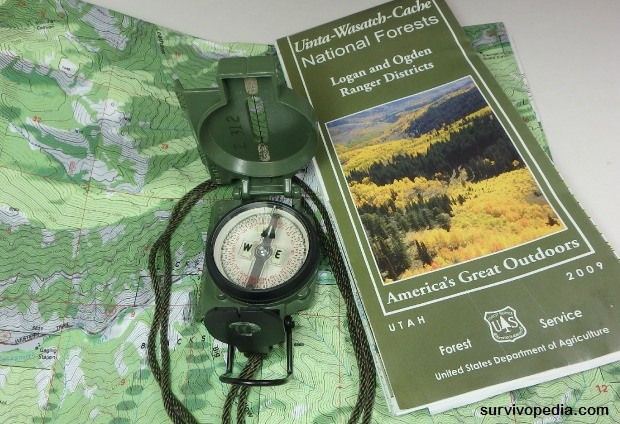
No comments:
Post a Comment